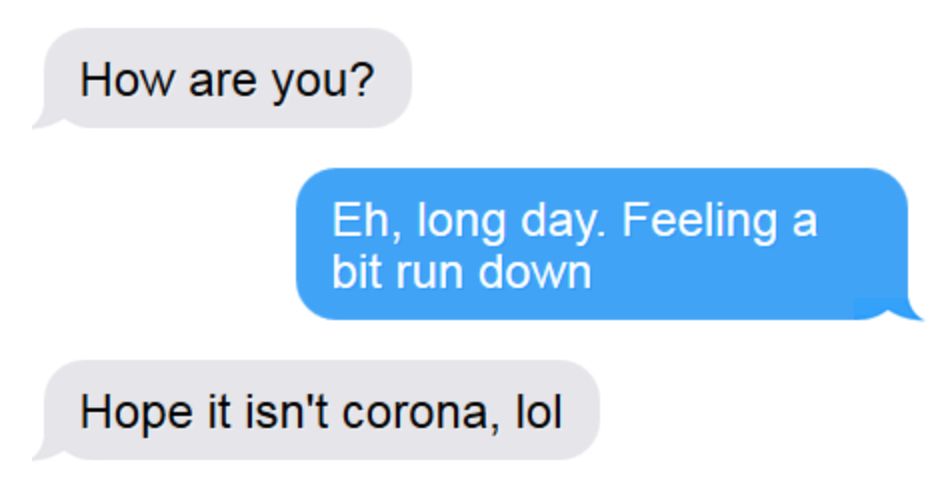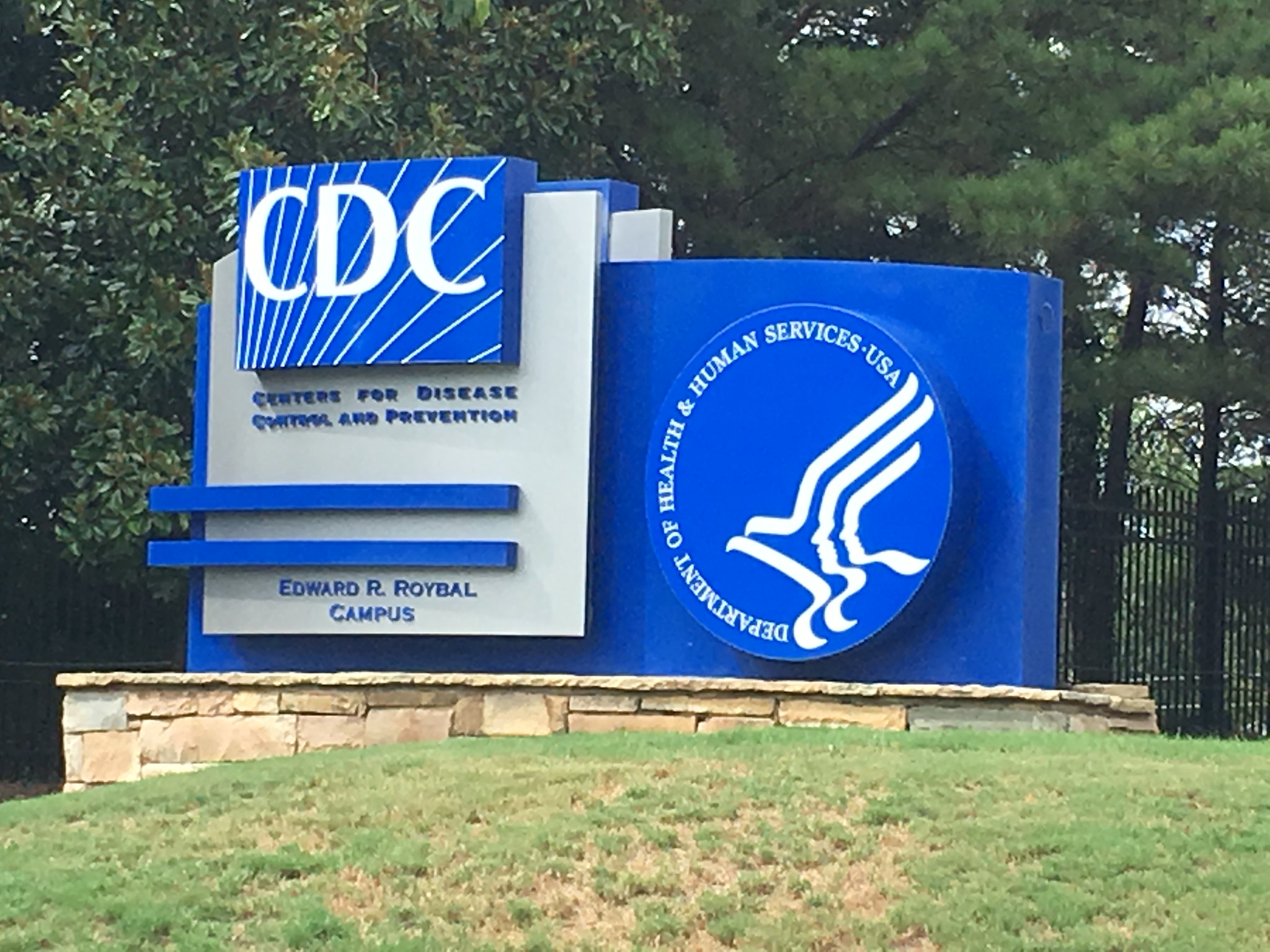Revision Statement: When this piece was initially published in early March, guidance from the CDC discouraged wearing masks. In early April, they updated their guidelines, urging individuals to wear masks in public. Furthermore, masks do help reduce the spread of COVID-19. Please wear a mask and adhere to social distancing.
“Are you worried about the coronavirus?”
This is a question that I have been asked dozens of times over the last several weeks. Ever since the World Health Organization (WHO) and U.S. Department of Health and Human Services declared the COVID-19 outbreak a public health emergency, news media has integrated COVID-19 into the news cycle constantly. The proliferation of COVID-19 has already disrupted daily life in ways that are impossible to ignore: economic turmoil in the stock market, a recently announced containment zone in New York, school closings, professional sports organizations banning media from locker rooms, and the suspension of the NBA’s season, to name just a few. Match day celebrations have even been canceled at many medical schools across the country.
By now, whenever someone asks me about COVID-19, I have a standard response — and I try to be more reassuring than Twitter or Facebook. Those who are asking me are usually folks outside of the medical community who are trying to decide just how fearful they should be. Being a medical student during this time seems to signify that I should have an opinion more informed than the average person.
Typically, reviewing how COVID-19 is transmitted and the personal hygiene techniques that we know are useful in prevention seem to be calming to most people, especially after explaining that the illness is life-threatening to those with certain risk factors. Then, the inevitable follow-up question comes, “Should I be wearing a mask?” To which the the U.S. Surgeon General Jerome Adams responded:
Seriously people- STOP BUYING MASKS!
They are NOT effective in preventing general public from catching #Coronavirus, but if healthcare providers can’t get them to care for sick patients, it puts them and our communities at risk!
https://t.co/UxZRwxxKL9— U.S. Surgeon General (@Surgeon_General) February 29, 2020
Despite the public dread and concern among my non-medical family and friends, the coronavirus and society’s response have become a common source for jokes among my medical school classmates and me, as we feel its impact on our education: medical students cannot scrub into the operating room and are prohibited from seeing any patients on contact and droplet precautions to preserve masks and other personal protective equipment (PPE). Last week, the Association of American Medical Colleges (AAMC) recommended that medical students do not participate in the direct care of COVID-19 patients and that medical schools consider suspending in-person activities based on the status of regional and local public health concerns.
As learners who are used to consuming information at an exponential pace, COVID-19 has frustratingly limited our education rather than becoming a learning opportunity. In a spiral away from usefulness, my medical school peers and I tend to talk about the coronavirus somewhat facetiously, which limits the quality of our own dialogue regarding a substantive public health crisis.

Image courtesy of Samuel Rouleau.
In an attempt to learn from COVID-19, allow me to suspend my generation’s dark humor of memes and gifs for a moment to get real. Although I am not personally worried about the wellbeing of myself or my healthy family members, I am worried about the health of our community — locally, nationally and globally.
One common tactic of downplaying the current outbreak is by comparing COVID-19 to the common flu, which President Trump endorsed in a recent Tweet. The seasonal flu carries a case fatality rate of approximately 0.1%. As of March 3rd, the WHO reported a case fatality rate for COVID-19 of around 3.4%, and a JAMA paper based on data from the Chinese Center for Disease Control and Prevention reported a case fatality rate of 2.3%. As of March 10th, the U.S. CDC reported 647 cases and 25 deaths for a case fatality rate of 3.9%. The counterargument is that mild cases of COVID-19 are being underreported, so the case fatality rate is much lower than what we now estimate.
To me, the obsession with the case fatality rate is perplexing. Even if the case fatality rate of COVID-19 is closer to that of the seasonal flu, this percentage does not adequately represent the potential danger of COVID-19. Harvard’s School of Public Health released a model that estimates a minimum of 20% of the global population will be infected by COVID-19. Using the lowest prediction of Harvard’s model and assuming the lowest case fatality rate of 0.1%, approximately 14 million individuals would die.
Although the percentages and the absolute numbers line up mathematically, they are at odds in an emotional sense. While we may look to the survival rate for comfort, we realistically cannot avoid the fear of contracting the virus. Additionally, the infectivity of COVID-19 is estimated to be almost double that of regular influenza. Not enough information is known about COVID-19 to estimate how changing seasons will impact its spread, but seasonal change may worsen in the Southern Hemisphere as time progresses. Debating the lethality of COVID-19 detracts from the fact that COVID-19 will continue its rapid and alarming spread.
The U.S. health care system is not adequately prepared to handle an additional stressor to public health. In a recent interview, infectious disease expert Dr. Michael Osterholm describes the health care system as “stretched thinner now than ever” with no “excess capacity,” especially given concerns with current levels of public health funding.
Furthermore, population risk factors within the United States increase the risk of severe illness. Data from the outbreak in Wuhan, China suggests that being an older male and possessing certain risk factors (including smoking, diabetes, COPD, hypertension and malignancy) leads to the potential for increased illness severity. Additionally, obesity leads to an increased risk of Acute Respiratory Distress Syndrome (ARDS), which is one of the most feared complications of COVID-19. As a result, the case fatality rate in the U.S. could be different than the estimates from China based on higher obesity rates, especially those above the age of 45. On the other hand, the rate of tobacco use in China is greater than in the U.S. by 20%, further complicating any efforts to extrapolate case fatality rate to the U.S. population.
Another important takeaway from studying the data in China is that 5% to 10% of COVID-19 cases can become severe, which is a larger proportion than influenza. Considering that some hospitals may lack the supply of PPE and advanced respiratory support resources (ventilators and ECMO machines) necessary to handle an influx of severe cases, the U.S. healthsystem is not poised to adequately respond to this epidemic.
“Flattening the curve” is one concept that can be used to limit the influx of COVID-19 cases. Essentially, the rationale is that effective quarantine can reduce the rate of disease spread even if the total number of cases over time remains the same, which would help prevent the health care system from being overloaded. But strategic, publicized decisions by infectious disease experts and public health agencies are in short supply as the nation begins to employ haphazard quarantine and containment measures.
In short, yes. I am worried about COVID-19 and its potential impacts on our communities at all levels. From a public health perspective, the efforts that have already started to create a vaccine and the proposals to optimize the delivery of care for COVID-19 give me some optimism. But I have been disappointed by the superficial public discussion of COVID-19 that has leaked into the realm of medical education.
While I certainly understand that this is a broad-reaching crisis that demands the attention and resources of health care professionals, as a medical student I have still been discouraged by the lack of avenues to think and learn about COVID-19 formally. Rationing PPE and protecting the health of our future doctors is certainly an appropriate response; at the same time, however, medical schools should be encouraging their students to engage with the COVID-19 outbreak while promoting student safety. After all, we are bound to be on the front lines of the next crisis.
Author’s note: EMCrit now has a chapter on COVID-19 that may be useful for medical students wishing to learn more.
Image credit: “CDC” (CC BY 2.0) by Raed Mansour

